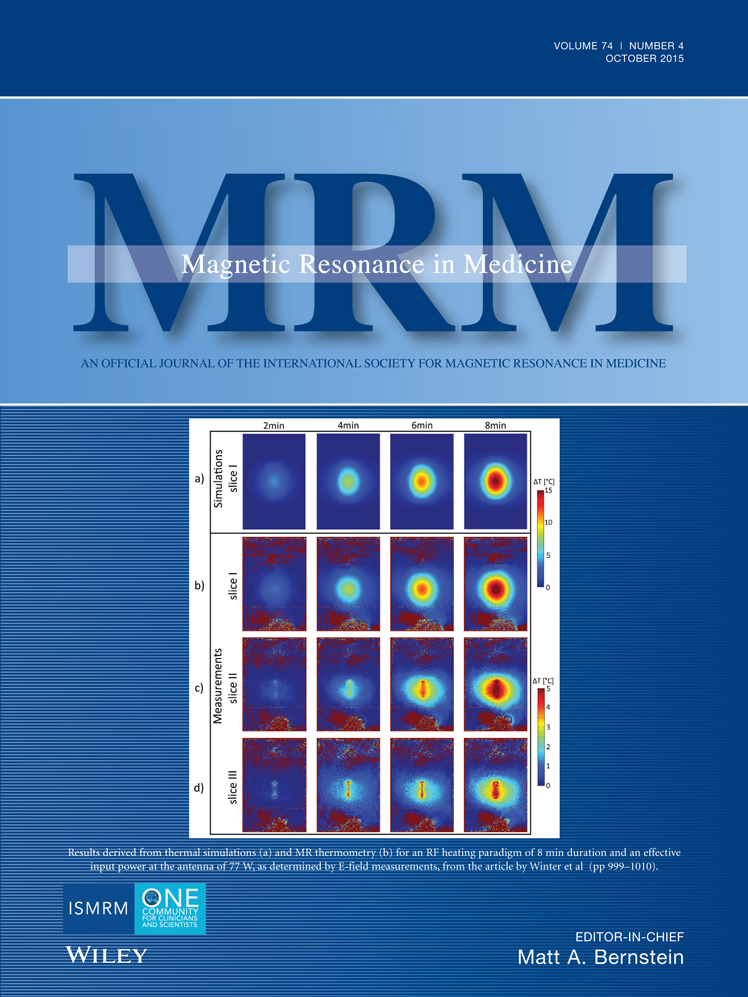Spatiotemporal phase unwrapping for real-time phase-contrast flow MRI
Abstract
Purpose
To develop and evaluate a practical phase unwrapping method for real-time phase-contrast flow MRI using temporal and spatial continuity.
Methods
Real-time phase-contrast MRI of through-plane flow was performed using highly undersampled radial FLASH with phase-sensitive reconstructions by regularized nonlinear inversion. Experiments involved flow in a phantom and the human aorta (10 healthy subjects) with and without phase wrapping for velocity encodings of 100 cm·s−1 and 200 cm·s−1. Phase unwrapping was performed for each individual cardiac cycle and restricted to a region of interest automatically propagated to all time frames. The algorithm exploited temporal continuity in forward and backward direction for all pixels with a “continuous” representation of blood throughout the entire cardiac cycle (inner vessel lumen). Phase inconsistencies were corrected by a comparison with values from direct spatial neighbors. The latter approach was also applied to pixels exhibiting a discontinuous signal intensity time course due to movement-induced spatial displacements (peripheral vessel zone).
Results
Phantom and human flow MRI data were successfully unwrapped. When halving the velocity encoding, the velocity-to-noise ratio (VNR) increased by a factor of two.
Conclusion
The proposed phase unwrapping method for real-time flow MRI allows for measurements with reduced velocity encoding and increased VNR. Magn Reson Med 74:964–970, 2015. © 2014 Wiley Periodicals, Inc.




